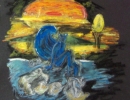
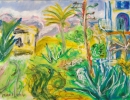
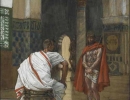
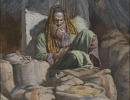
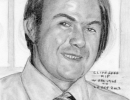
Also See: 'Where to start drawing?' <Click Here>
Also See: 'Eyes, Ears & Nose Placement <Click Here>
————————-
A Friend asked me for some advice for his daughter just starting out in Art
==============
My advice for beginners.
I am no expert but some friendly advice. I wish her good luck and tell her she needs to keep practicing and practicing. Drawing is mostly self taught so only guidance can really be provided. Some tips work for some and not for others. You just need to try things and pratice, and do not think you are rubbish at it because the results are not as good as you seen others do, these others I refer to have practiced a lot and started out no different than I did.
If you saw some of my earliest works when I was about between 10 – 15 years you would laugh. But I did not let failure stop me. I got frustrated and annoyed but I kept on trying with it, but I have a father that told me I am doing good so that helps.
What does not help is people do not realize you need good equipment to get results like I have achieved recently. – but they are not cheap and not ideal for beginners. You need good paper, good pencils. But these should not be wasted.
Get a HB pencil and any paper will do for now, practice doing sketching not drawing. Try doing still life, set some objects up and draw it. I did not do this but started straight into drawing people, however I had no one to guide me, and when I went to college they taught by doing still life first. This was good as you wont get frustrated of not getting a face looking right but a banana for instance will look like a banana even if not totally accurate. It will help you to observe forms and draw them before attempting a more challenging face.
Learn to get the shapes right of faces, eyes nose mouth and hands etc – sketching will take a long time at first, forget what I said about sketching being fast, at the begining do it slowly. It wont happen straight away but with each attempt it gets easier. Then later think about moving on to better paper and pencils.
My general rule at the moment is start by getting the outline of the face the right shape. Get the eyes, nose and mouth in position. Stand back and look at your work from a distance from time to time to check the accuracy, also try looking at it under different light sources. If I am working on the same scale as my source image and I am unsure of my accuracy I sometimes use a plotting compass to verify how correct I am. More often than not I am accurate enough and do not make adjustments. If your still unsure about the accuracy of your facial features, try drawing in the first layer of hair. Adding the hair really helps bring out those features!
But do not become reliant on Plotting Compasses as you need to be able to draw fairly well freehand! or you will have problems when you attempt to draw larger or smaller than your source material, specially if you are drawing from a still life. This is where learning to draw from a still life is great as this will develop your free hand abilities and increase you observation skills of the environment around you and all the lights and shadows and depth of field. These can not be gained so easily from flat 2d source images.
————————-
Also See: 'Where to start drawing?' <Click Here>
Also See: 'Eyes, Ears & Nose Placement <Click Here>